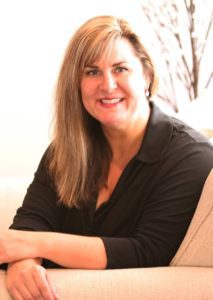 By Suzann Girtz, Ph.D., Associate Professor – Teacher Education, Gonzaga University
By Suzann Girtz, Ph.D., Associate Professor – Teacher Education, Gonzaga University
Guest Blogger
Imagine your school is in the bottom 5% of all Washington state schools for graduation. About one out of every two students will not graduate. And when people visit your school to question what’s happening, the students respond, “What do you expect?” They attribute the failures to themselves and maintain, “That’s just the way it is here.”
That is a quote from a student at Sunnyside High School several years ago. Its graduation rate hovered at 49%, students blamed themselves, teachers were exhausted, and everyone was working as hard as they could. It was difficult to envision this struggling school becoming a top performer in just a couple years – but it did. Significant change in a short time IS possible in our schools; we’ve experienced it.
Sunnyside High School serves about 1900 students, 85% of whom qualify for free and reduced lunch and over 90% are Hispanic/Latino. In moving from a 49% to over 90% graduation rate, the school also embraced zero disproportionality: they equitably served all demographics, an issue of social justice. They hired a turnaround principal on loan from Gonzaga University who moved to the community, while I got the opportunity to visit in order to tell the story of what was happening in the school.
Acting as both practitioner and researcher, we were able to describe a humanistic approach to building a culture for learning that aligned academic press, social support, and relational trust based on the understanding that old beliefs are changed by supporting new behaviors. Properly conducted, the approach results in high morale, a sense of inclusiveness and success, increased efficacy, and improved metrics in all areas of education.
Then, the frameworks for change that came out of Sunnyside were proofed against cohorts of large and small districts that were identified as making gains evident in the new Washington state data analytics. Each was minimizing disproportionality, decreasing the opportunity gaps at its school. The state analytics allow us all to see performance indicators in a new way, one that highlights the social justice aspect of equitably serving all learners despite region, income, ethnicity, gender, or special needs. The focus is on serving with aims of excellence and equity by building a culture for learning, couched in relational trust.
We believe what we learned in Sunnyside applies EVERYWHERE.
Many resources designed as a result of Sunnyside and the following cohorts were shared from the Office of the Superintendent of Public Instruction (OSPI) via collaboration to increase graduation rates in Washington state. A few are described below:
- Concept and Action Framework: Two frameworks that provide a diagram to organize the graduation equity work within schools and districts.
- Current Reality Instrument: A tool to reflect on the status of key framework areas and promote change in the school/district.
- Graduation Resource Packet: A comprehensive guidebook, including the frameworks, key practices, implementation guide, and assessment tools.
- 45-Day Action Plan Overview: A strategy to create transparency by: clarifying a vision, collecting information, developing goals, and creating an action plan.
- 45-Day Action Plan Example: An elementary example.
- 45-Day Action Plan Template: A template to organize your goals into 45-Day cycles.
Take pride in the fact that the research and resources above COMES RIGHT OUT OF SCHOOLS, not business – and, even better – they are all WASHINGTON SCHOOLS. As we take back the professional legitimacy of the education profession by conducting and heeding our own research, the question remains: What is the body of research we can say we have in common?
We hope you will join the dozens of Washington school districts who have contributed to and used this research for school improvement – at all levels, elementary, middle and high schools.
Please be in touch for conversation or collaboration. We’d love to connect with you.
Powerless to Powerful Series by Charles Salina, Suzann Girtz and Joanie Eppinga
Leadership for School Change (the WHAT)
https://rowman.com/ISBN/9781475822366/Powerless-to-Powerful-Leadership-for-School-Change
Transforming Schools Through Systems Change (the HOW)
https://rowman.com/ISBN/9781475822311/Transforming-Schools-Through-Systems-Change#